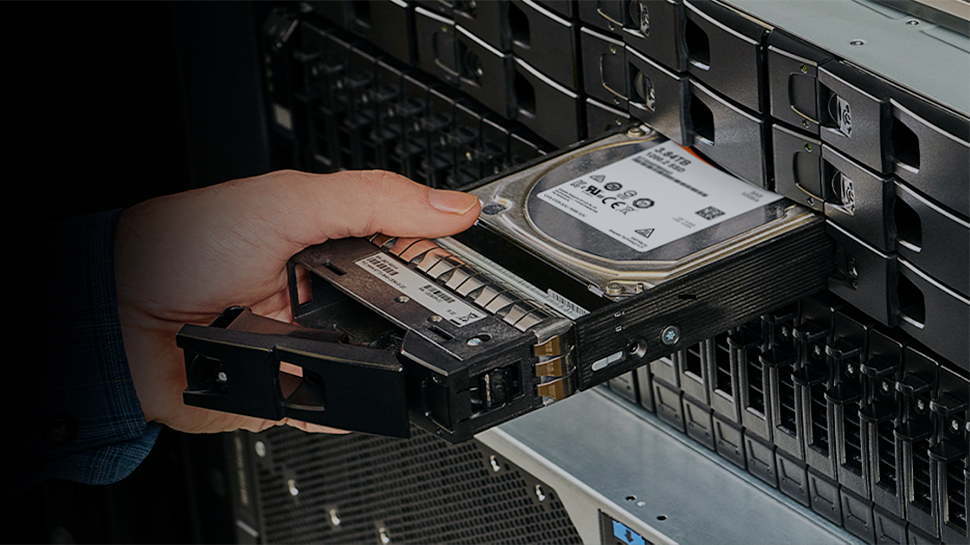Seagate’s Exos Mozaic 3+ hard drives featuring its heat-assisted magnetic recording (HAMR) technology have passed qualification at leading customers, and the company is ready to ship these HDDs in volumes. While previously the company shipped these drives inside its Corvault and Lyve systems and to select customers, volumes of these products were low. Now that some of the company’s partners have qualified these devices, the company can kick off mass production.
“Seagate has successfully completed qualification testing for its HAMR-based Mozaic drives with several customers within the Mass Capacity markets, including a leading cloud service provider,” a statement in the company’s Form 8-K filed with the SEC (and noticed by Blocks & Files) reads. “The Company expects to begin shipping initial HAMR product volume to this cloud customer in the coming weeks.”
It took Seagate over a decade to develop its HAMR technology, then years to design and build actual hard drives, refine the technology, and fix all bugs. The company once expected to ship its HAMR-based drives in 2020, but various teething problems delayed volume ramp to 2024 – 2025 timeframe.
Since HAMR HDDs heat their media before recording and uses all-new plasmonic writers sub-system with a vertically integrated nanophotonic laser, new Gen 7 Spintronic readers, brand-new glass platters with FePt magnetic film, new overcoats, and a new controller, this represents major technological changes. This is why Seagate’s partners, particularly large cloud service providers, need to qualify these drives to make sure that they deliver required performance and reliability. And of course this takes time. So far, only one CSP and several significant customers have qualified Seagate’s Exos Mozaic 3+ HDDs, but more to follow, so Seagate will ramp up production of HAMR drives in 2025.
While HDDs based on the Mozaic 3+ platform require re-qualification, Seagate’s Exos drives featuring HAMR are drop-in compatible with existing cloud servers, offering higher capacity, faster sequential speeds, and reduced power consumption per TB, which makes it easier to adopt them. However, they decrease the IOPS per TB performance, requiring cloud providers to address this to meet QoS and other standards, which will initially slowdown their adoption by some of Seagate’s customers.
It is necessary to note that Seagate expects demand for HDDs to increase in the coming years, so it is going to need to increase its unit volume shipments. Unfortunately, there is a problem with this as the company has hit hard times bringing its production tools back online.
“Amid a strengthening HDD demand environment, Seagate has been focused on bringing existing production equipment back online to support customer demand and this process has taken longer than anticipated,” another statement by the company reads. “As a result, production output for Seagate’s fiscal third quarter ending March 28, 2025 will be lower than previously expected with an associated revenue impact of up to $200 million for the fiscal third quarter.”
Seagate will probably have enough capacity to ramp up its HAMR drives, but it looks like demand for other products may remain unfulfilled.
With Mozaic 3+ HDDs about to enter mass production, it is necessary to note that Seagate is developing the Mozaic 4+ platform for 40TB+ HDDs, set for release in 2026, and the Mozaic 5+ platform for 50TB+ drives, expected in 2028 or later.
